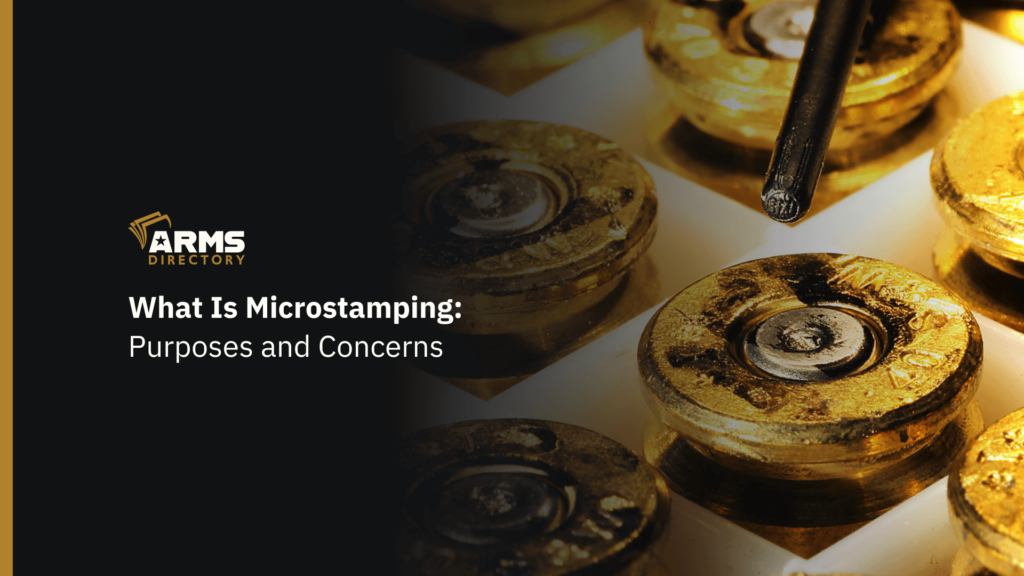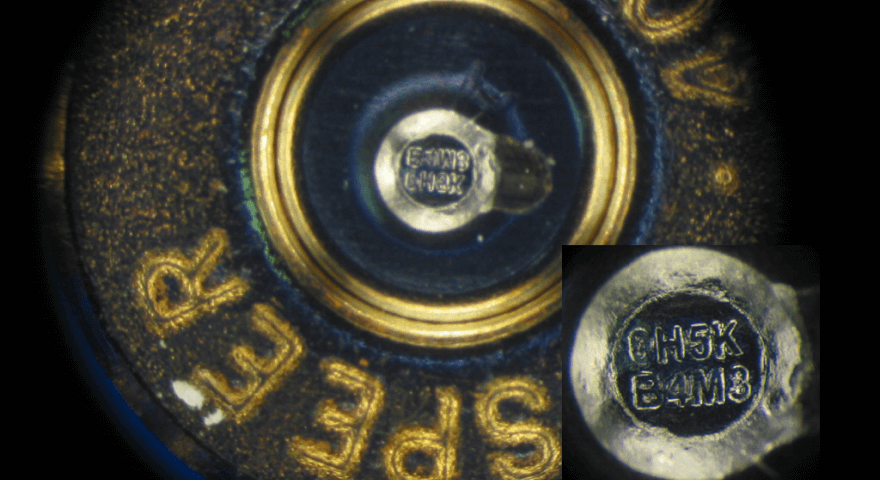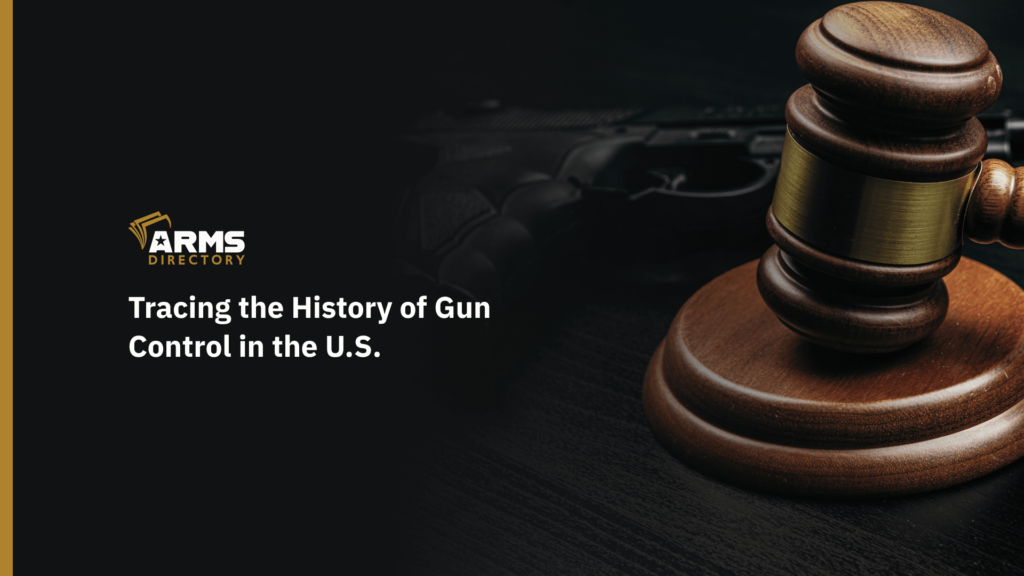
What Is Microstamping: Purposes and Concerns
These days, law enforcement agencies potentially have access to a high-tech tool that could help them solve gun crimes as well as track illegal firearms. It’s called microstamping, and has the power to revolutionize the fields of forensics and ballistics.
However, this technology has also sparked controversy and debate. Does it limit our freedoms, or do we have to prioritize rights even if it means sacrificing certain safety measures?
But what is microstamping? Let’s take a look and see what all the fuss is about.

What Is Microstamping?
Microstamping guns is a pretty clever idea. It involves etching tiny markings, like a microscopic code or serial number, onto the firing pin and breech face (the part the cartridge that it rests against) of a gun. When the gun is fired, these little markings get transferred onto the cartridge casing that’s expelled.
So now, instead of just having a spent casing with some hard-to-read markings from the gun’s interior, you’ve got a unique code that can be easily traced back to the specific firearm it came from. It’s like giving every gun its own tiny fingerprint.
Application and Potential Benefits of Microstamping Guns
While the idea has been around since the 1990s, microstamping technology really came into the spotlight in 2007 when California became the first state to pass a law requiring all new models of semi-automatic pistols sold there to have this technology built-in.
A few other states like Connecticut and Maryland have looked into it too, but California microstamping has been the real pioneer so far. Outside of firearms, this tool is also used in other industries like aerospace and electronics to create tiny, precise components.
For law enforcement, the potential upsides of microstamping are big. If they recover spent cartridge casings from a crime scene, those little coded markings could quickly lead them back to the registered owner of the gun that fired those rounds.
That’s a major advantage that potentially could help get criminals off the streets faster and make progress on those tough unsolved cases where they’ve got evidence, but no clear leads.
Advocates also argue that applying this technology could discourage gun crimes in the first place. If there’s a real risk of leaving a trail of forensic evidence behind, maybe some people would think twice before pulling the trigger.
Concerns About Gun Microstamping
Of course, nothing’s ever that simple. Critics have raised some valid concerns about the practicality of microstamping such as:
- Planting evidence: Criminals may take spent casings from shooting ranges and place them at crime scenes, falsely accusing innocent people and leading law enforcement astray.
- Wear and tear: Over time and with use, the microstamps could degrade, making them illegible and thereby rendering the technology ineffective .
- Unproven tech: Microstamping is relatively new and lacks independent validation which could also make it questionable.
- Limited scope: Many firearms manufactured before the enactment of new laws would be exempt from requirements, and enforcing it across state borders presents significant challenges, undermining its intended purpose.
- Liability minefield: While law enforcement firearms are exempt, the potential legal ramifications of an unmarked officer’s weapon being used in a crime could be substantial.
- Manufacturing headaches: Gun manufacturers contend that engineering a firearm capable of consistently imprinting these tiny codes from the inside out is exceedingly challenging, and no production model has successfully achieved this consistantly yet.
- Cost: Microstamping could drive up the price of firearms, potentially affecting law-abiding gun owners.

Does Microstamping Infringe Upon Second Amendment Rights?
The debate boils down to simply balancing public safety and individual rights, which is where much of the backlash comes from.
Some argue that requiring gunmakers to use this tech infringes on Second Amendment rights. They see it as the government overstepping how guns must be made, burdening legal owners. From their point of view, microstamping makes it harder and costlier for law-abiding citizens to own guns. They see it as excessive regulation and government control.
On the other hand, advocates say public safety should be the priority. They claim microstamping is a powerful tool against gun crimes and illegal weapons.
This clash of viewpoints fuels the controversy and debates on how far new tech can go before impacting fundamental rights.
Legal Landscape
With all the speculation and controversy the legal status of microstamping is pretty messy with ongoing legal battles.
In 2023 California passed a law expanding microstamping requirements. Starting January 1, 2028, licensed firearms dealers in California are barred from selling semi automatic handguns unless verified as microstamping-enabled as per the California DOJ.
At the federal level, attempts to establish nationwide requirements have stalled out in the face of opposition from pro-gun lawmakers and lobbying groups. Places like New York have given it a look too, but no other state has gone as far as California yet.
It’s hard to say where this one’s headed next. A lot will depend on how current and future court cases and legislation play out when it comes to regulating this kind of technology.
The Future of Gun Microstamping
Looking ahead, the future of microstamping could go in a few different directions. If the legal and technical hurdles can be cleared, wider adoption and implementation across more states or nationwide is certainly possible.
Advances in areas like laser engraving, tamper-proof markings, and integration with blockchain/digital tracking could help address some of the current limitations too. On the flip side, if the backlash and opposition proves too strong, this practice may end up as an experiment that never really took off.
Only time will tell, but one thing’s for sure – this little forensic tool has become a big point of controversy in debates over gun laws, rights, and safety.
Wrap Up
Like many new innovations, microstamping comes with a mix of promises and pitfalls that have to be carefully weighed. While its crime-fighting potential is exciting, valid concerns around cost, technical reliability, and civil liberties have to be addressed too.

![Gun Registration Requirements by State [What You Need to Know]](https://vault.armsdirectory.com/wp-content/uploads/2023/10/27073220/Gun-Registration-Requirements-by-State-What-You-Need-to-Know-1024x576.png)
![The Ultimate Shooting Accessories for Every Weapon [A 2023 Beginners Guide]](https://vault.armsdirectory.com/wp-content/uploads/2023/08/30071223/The-Ultimate-Shooting-Accessories-for-Every-Weapon-A-2023-Beginners-Guide-1024x576.png)


